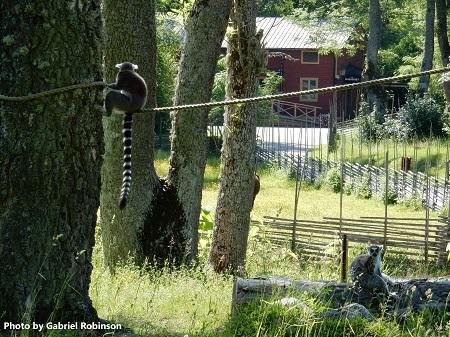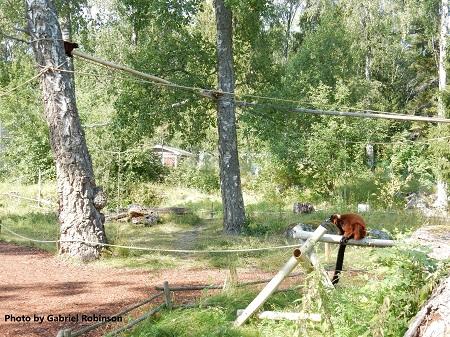Discussion - Use of levels
Ring-tailed lemurs’ use of levels

No enrichment:
They preferred to use the ground and sometimes climbed up to the low canopy, but rarely to the middle or high canopy, which contrasts with previous studies.
Enrichment:
Their use of levels did not change significantly when enrichment was added, maybe because it was added in the levels already used the most during the baseline.
Visitor presence:
Their use of levels did not change significantly when visitors were present. However, they tended to use the ground more often with no visitors present, maybe because they were more comfortable if undisturbed.
Meteorological conditions:
They were significantly affected by meteorological conditions. They preferred the ground if sunny and cold, climbing to level 1 for shelter if rainy or warm.
Red ruffed lemurs’ use of levels

No enrichment:
They spent unexpected amount of time in low canopy, maybe because their skittishness prevented them from crossing the enclosure to high canopy areas.
Enrichment:
Their use of levels did not change significantly with enrichment, maybe because it was added in the levels used the most during the baseline. However, they were lured to the ground by enrichment and structural enrichment helped them reach high canopy areas.
Visitor presence:
The red ruffed lemurs kept away from visitors by staying in the low canopy close to their house and diversified their use of levels with no visitors present.
Meteorological conditions:
They preferred high canopy if rainy or cold, with fewer visitors or ring-tailed lemurs, staying in low canopy if sunny or warm to avoid visitors or ring-tailed lemurs.
Responsible for this page:
Director of undergraduate studies Biology
Last updated:
05/30/21
